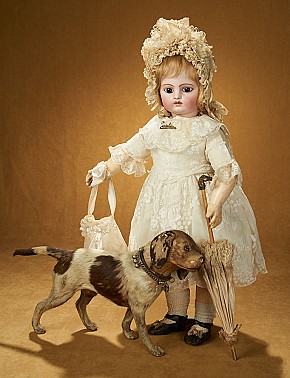ONE THING LEADS TO ANOTHER
Saturday, January 22, 2022Lots 1-583
January 22-23, 2022 in Annapolis, Maryland
Featuring Part II of the Luann Guleserian Collection along with the personal portrait dolls of the child film star Diana Serra Cary (“Baby Peggy”) and an outstanding collection of French dolls from a private Netherlands collector. 8.5" x 11". 220 pages.
Live Auction
































































































































































































































































































































































































































































































